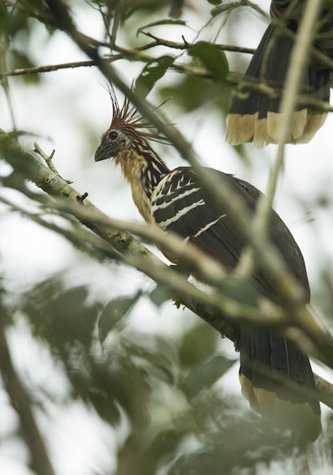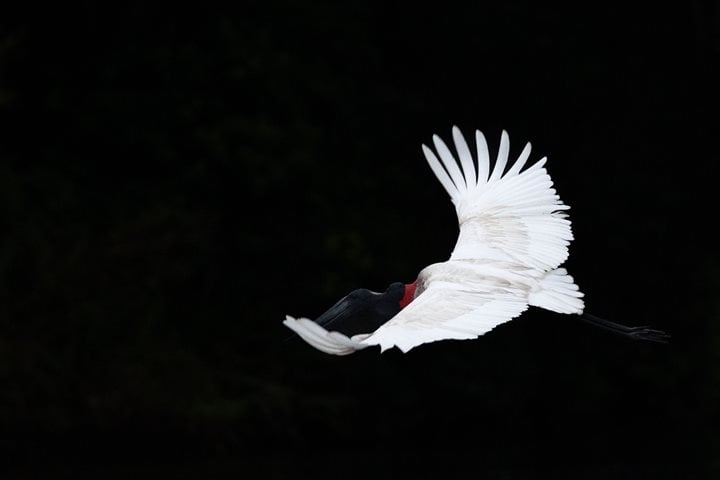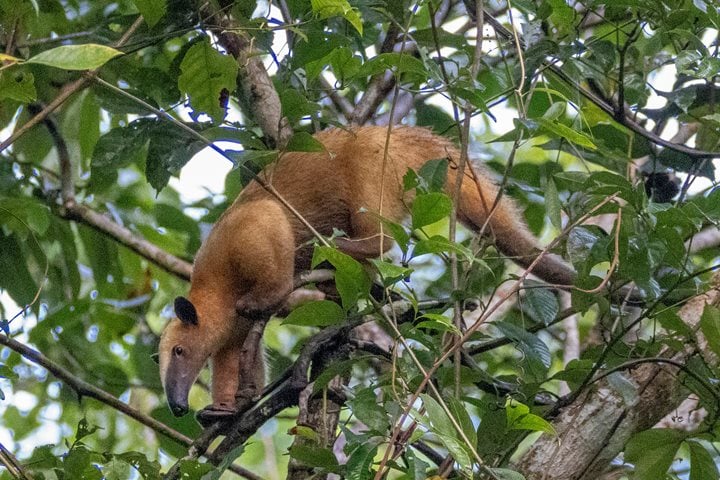Today was a beautiful rainy day in the rainforest. There is no better way to feel a part of the rainforest than to be caught in a rainstorm. This in no way dampened our spirits. Rain is the lifeblood of the Amazon. The vast majority of the rain (an estimated 90%) comes from the Atlantic Ocean. As the moisture-laden atmosphere builds up against the Andes Mountain range, it creates rain. In the Ucayali River basin, the average annual rainfall is about 85 inches (or 220 cm) and some places in the Amazon get more than 200 inches (or 500 cm) per year. Most of this rain (about 60%) is recycled within the rainforest through evapotranspiration. This is the process where plants take up water through their roots and “exhale” vapor back into the atmosphere (the water cycle). The other 40% travels in the river back to the Atlantic Ocean. This morning we explored a flooded stream, locally known as Velluda caño, and added more birds to our bird list.
In the afternoon, we explored the Río Dorado and watched hoatzins feed in the Cecropia trees; this is a real treat—these birds can only be seen in the Amazon. They are a beautiful and prehistoric-looking bird. In fact, this bird still retains some ancient traits. They nest in trees, but if the young chick feels threatened it jumps into the waters below and later use a couple of claws that it have on each wrist to climb back. We stayed in the Río Dorado past dark. As dusk enveloped the river, we listen to the symphony of frog calls—it was beautiful, and so different from daytime excursions. As it became darker, we searched for caiman and found several spectacled caimans! Seeing red eyes shine back at you from the river is a great experience. The rain, a truly Amazon avian relict, and caiman—is there a better way to experience the rainforest?








